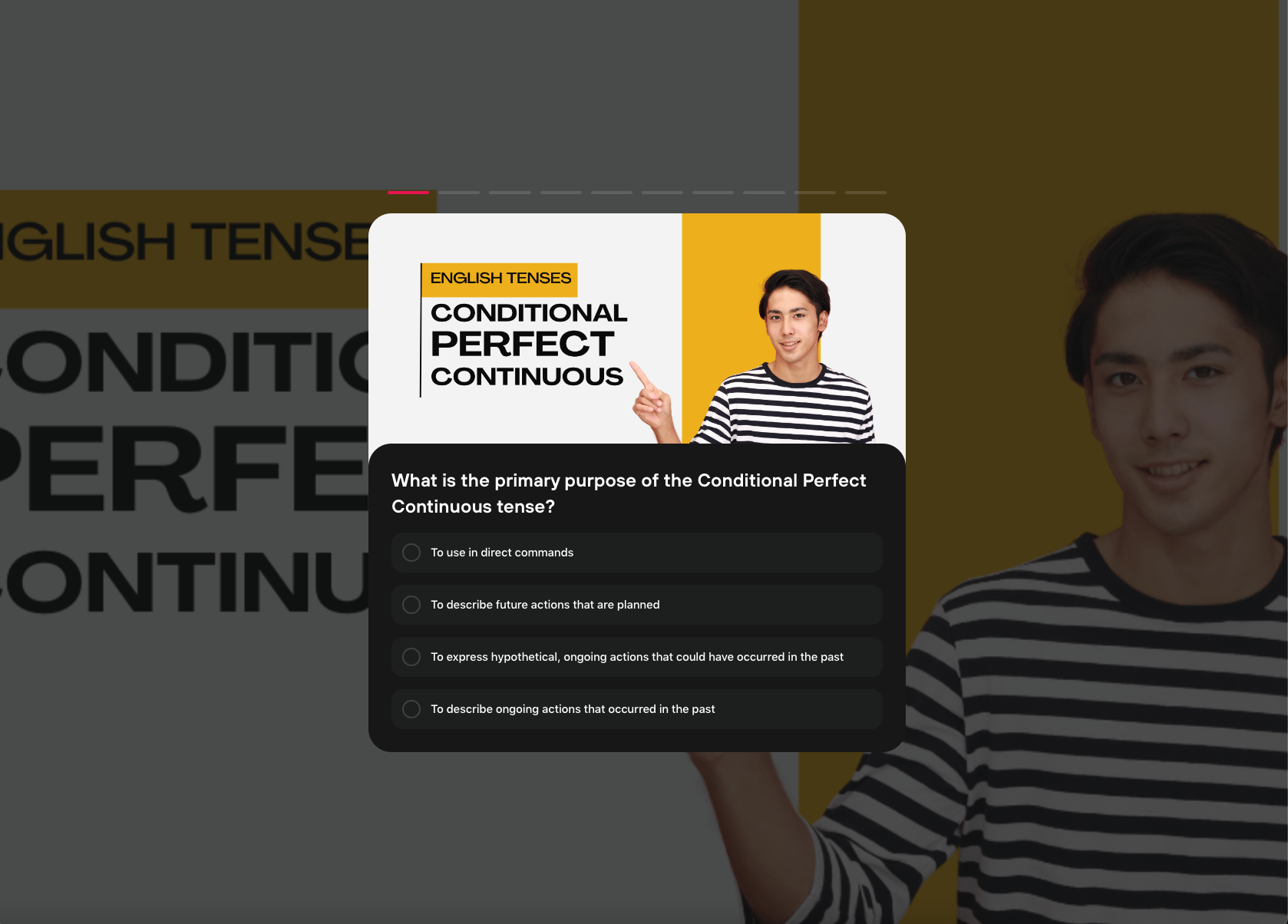Mastering the Conditional Perfect Continuous Tense: A Complete Guide

Mastering the Conditional Perfect Continuous Tense: A Complete Guide
Understanding the Conditional Perfect Continuous Tense: A Guide for English Learners
When it comes to mastering English grammar, one tense that often causes confusion is the Conditional Perfect Continuous tense. This tense may sound complex, but with a little practice, you’ll be able to easily understand how and when to use it.
Source: Learn English Coach YouTube Channel
What is the Conditional Perfect Continuous Tense?
The Conditional Perfect Continuous tense is used to express an ongoing action that would have been happening in the past, but didn’t, due to certain conditions. It’s often used in hypothetical or imagined situations. If this sounds like a mouthful, don’t worry! Let’s break it down into manageable parts.
The Formula
Here’s the structure of the Conditional Perfect Continuous tense:
[Subject] + would have been + [verb] + -ing + [condition].
Examples:
I would have been studying for the exam if I hadn’t gotten sick.
She would have been working on the project if the meeting hadn’t been canceled.
In these examples, the action (studying, working) was possible, but some other condition (getting sick, the meeting being canceled) prevented it from happening.
When to Use the Conditional Perfect Continuous Tense
There are specific instances when the Conditional Perfect Continuous is used, primarily to express:
Unreal situations in the past: It describes something that didn’t happen but could have if circumstances had been different.
We would have been traveling around the world if we had saved more money.
Regret or criticism about a past situation: It can reflect dissatisfaction or critique, especially when thinking about missed opportunities.
They would have been arriving on time if they hadn’t taken the wrong train.
Hypothetical, ongoing actions in the past: The tense suggests that the action would have continued over a period of time if certain conditions were met.
If the weather had been better, we would have been hiking all day.
Comparing Conditional Tenses
To clarify how the Conditional Perfect Continuous fits into the larger framework of English tenses, let’s compare it to other similar tenses.
Conditional Simple: Used for hypothetical events in the present or future.
I would go to the party if I weren’t so tired.
Conditional Perfect: Used for hypothetical events in the past that didn’t happen.
I would have gone to the party if I hadn’t been so tired.
Conditional Continuous: Used for hypothetical ongoing actions in the present or future.
I would be going to the party if I weren’t so tired.
By adding the perfect continuous aspect, the Conditional Perfect Continuous tense emphasizes the duration of the past action that didn’t happen but was ongoing in theory.
The Power of Context
Context is key when using the Conditional Perfect Continuous tense. It works best when you’re reflecting on an action that would have stretched over time. Think of it as painting a picture of the past, focusing on both the time and the conditions that affected the action.
Example:
If the company had invested earlier, they would have been leading the market by now.
In this sentence, the speaker imagines an ongoing action (leading the market) that could have occurred if the company had made an earlier investment. However, because that condition wasn’t met, the action remains a hypothetical one.
Common Pitfalls to Avoid
Here are a few tips to help you avoid the common mistakes learners make with this tense:
Overcomplicating the sentence: While the Conditional Perfect Continuous can seem tricky, it’s important not to overload your sentences with too many details. Focus on the key action and condition.
Correct: He would have been playing football if the field had been open.
Incorrect: He would have been playing football every day during the entire week had the field consistently remained open the entire time.
Confusing it with other tenses: Make sure you’re using the Conditional Perfect Continuous in situations where the action was ongoing but didn’t happen due to unmet conditions in the past.
Forgetting the ‘would have been’ structure: This is the heart of the tense. Without this key phrase, you might slip into another tense.
Practice Makes Perfect
The best way to get comfortable with the Conditional Perfect Continuous tense is through practice. Try creating sentences that reflect situations from your own life or stories you’ve heard. This will not only help you understand the structure better but also help you identify when it’s appropriate to use this tense in conversation.
Examples to Try:
Think about an opportunity you missed last year. How would you describe the actions you didn’t take using the Conditional Perfect Continuous?
Reflect on an event where circumstances changed, preventing something from happening. How would you describe the situation?
Final Thoughts
While the Conditional Perfect Continuous tense might seem overwhelming at first glance, breaking it down into its components—hypothetical, ongoing past actions, and unmet conditions—helps clarify its purpose. With regular practice and real-life application, you can use it naturally in no time.
Understanding this tense adds nuance to your English, allowing you to express past possibilities with precision and detail. So, next time you want to talk about what could have been happening, the Conditional Perfect Continuous tense will be your best friend!
FREE Quiz
Take our free quiz to test your knowledge of the Conditional Perfect Continuous tense.” 👉 Click Here to Start the Quiz






